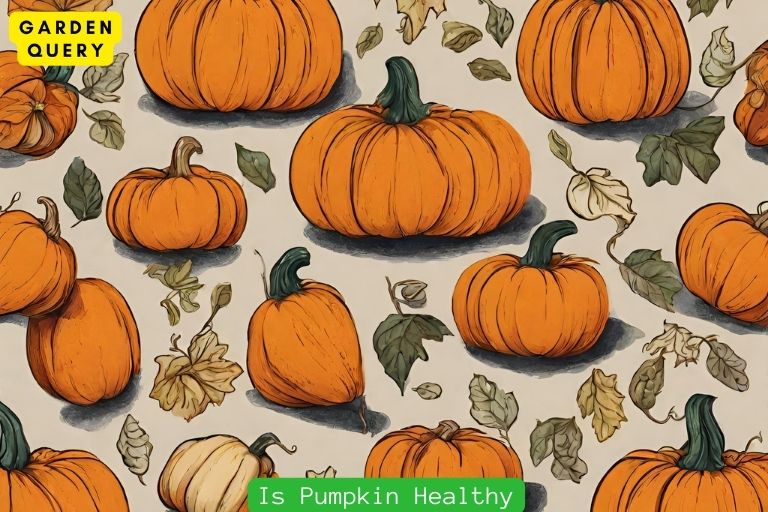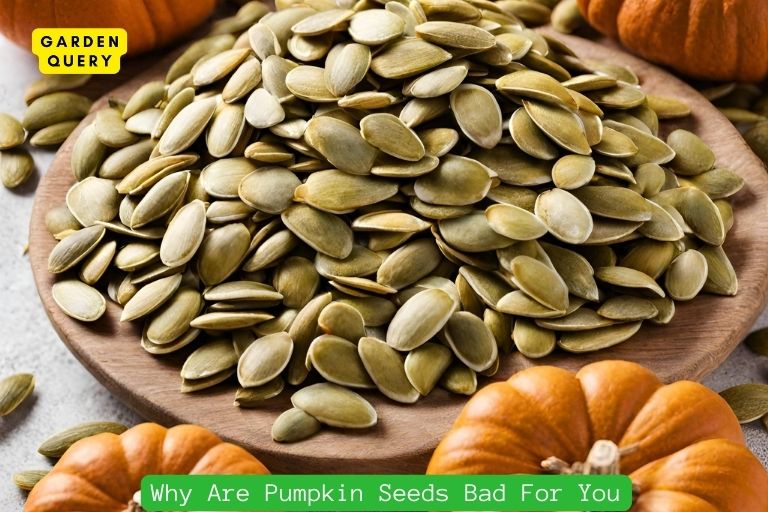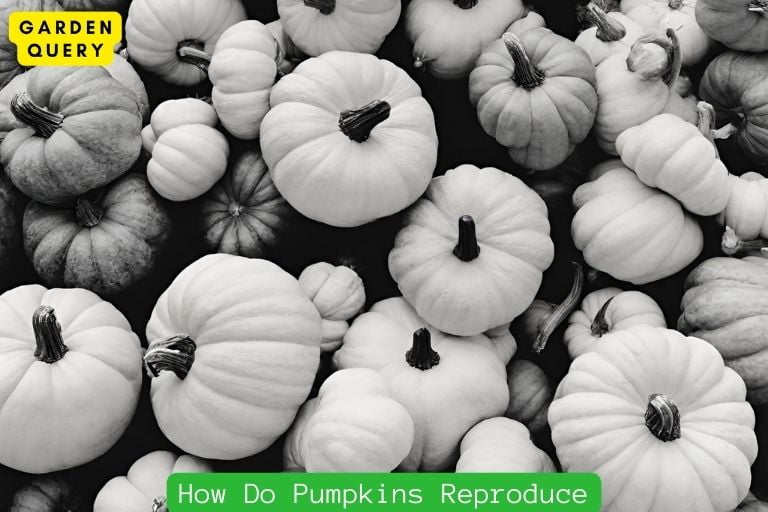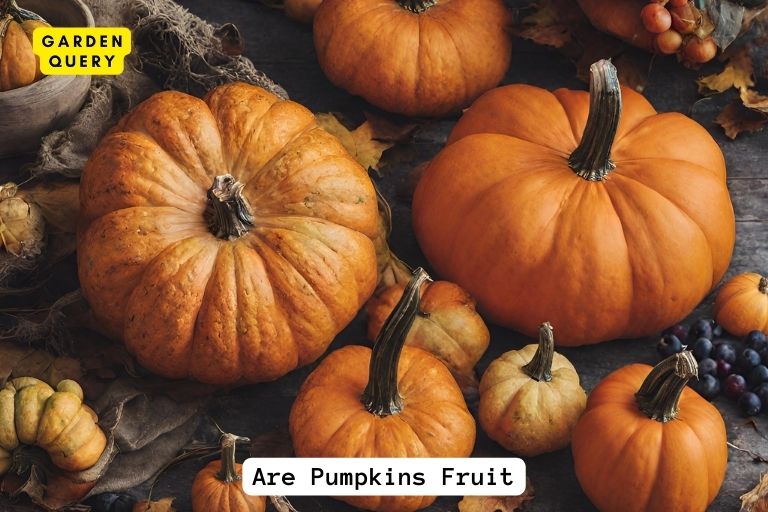Are Pumpkins Gourds?
Yes, pumpkins and gourds belong to the same family, Cucurbitaceae. However, they are distinct species with subtle differences.
Pumpkins and gourds are both members of the Cucurbitaceae family, sharing common features like a hard outer rind and seeds within. However, pumpkins are specifically classified as Cucurbita pepo, while gourds encompass a broader category of plants like Lagenaria and Cucurbita.
Pumpkins are often cultivated for culinary purposes due to their sweet and savory flesh, whereas gourds are typically grown for ornamental use or as utensils. Despite their shared lineage, pumpkins and gourds differ in taste, appearance, and applications.
Key Takeaway
Pumpkins Gourds
What are pumpkins and gourds?
When it comes to fall decor, pumpkins and gourds are often seen side by side, adorning porch steps, tabletops, and mantels. But are pumpkins actually gourds? Let’s delve into this botanical mystery.
Both pumpkins and gourds belong to the Cucurbitaceae family, which also includes cucumbers, melons, and squash. They are all classified as fruits, specifically berries, due to their fleshy and seed-bearing nature. However, pumpkins and gourds have distinct characteristics that set them apart.

Pumpkins
Pumpkins are known for their iconic round shape, vibrant orange color, and thick, sturdy skin. They are typically larger in size compared to gourds and have a more substantial flesh. Pumpkins come in various sizes, ranging from tiny decorative ones to giant ones suitable for carving and cooking. They are commonly associated with Halloween and Thanksgiving traditions and are a popular ingredient in pies, soups, and other recipes.
Gourds
Gourds, on the other hand, come in an array of shapes, sizes, and colors. They can be small and rounded, elongated and curved, or even resemble bottles and bowls. Unlike pumpkins, gourds have a tough and relatively thin skin that may be smooth, warty, or even ridged. Some gourds, such as birdhouse gourds or bottle gourds, have hard shells that can be dried and hollowed out for various practical purposes.
The difference between pumpkins and gourds
While both pumpkins and gourds belong to the same family, their main difference lies in their cultivation and usage.
- Cultivation: Pumpkins are primarily cultivated as food crops, with specific varieties bred for tasty and nutritious flesh. They require rich soil, adequate moisture, and proper care to thrive. Gourds, on the other hand, are often cultivated for their decorative or practical purposes. They are grown for their unique shapes, interesting patterns, and hard shells that can be dyed, painted, or carved.
- Usage: Pumpkins have a multitude of culinary uses. They can be roasted, pureed, baked into pies, or turned into comforting soups. The larger pumpkins are often carved into decorative jack-o’-lanterns during Halloween. Gourds, while not typically consumed, are prized for their ornamental value. They are widely used in fall decorations, floral arrangements, and crafts. Dried gourds also have functional uses like birdhouses, utensils, and containers.
In conclusion, while pumpkins and gourds share some similarities as members of the Cucurbitaceae family, they have distinct characteristics that set them apart. Pumpkins are larger, with a round shape and thick skin, and are primarily cultivated for culinary purposes. Gourds, on the other hand, come in various shapes and sizes, have a tougher skin, and are often grown for decorative or practical uses. So the next time you see a pumpkin and a gourd side by side, you’ll know that they may belong to the same family, but they each bring their own unique qualities to the autumn festivities.
Similarities between Pumpkins and Gourds
Physical appearance
At first glance, pumpkins and gourds may appear quite similar. They both belong to the Cucurbitaceae family and have similar physical characteristics. Pumpkins and gourds are both typically round in shape, although some gourds may also have elongated or irregular shapes. They can have a variety of colors, ranging from green, orange, yellow, to even white. Both pumpkins and gourds have a hard outer shell that protects the inner flesh and seeds.
The size of pumpkins and gourds can also be quite similar. While pumpkins are often associated with larger sizes that are suitable for carving, gourds can come in various sizes, some of which can be quite small and decorative. It is important to note that not all gourds are edible. Some gourds are specifically grown for their decorative purposes due to their unique shapes and colors.
Growing conditions
Pumpkins and gourds have similar growing conditions and requirements. They both thrive in warm climates and require well-drained soil to grow properly. Both crops require a good amount of sunlight to photosynthesize and produce healthy fruits. They are also both annual plants, meaning they complete their life cycle within a year.
Pumpkins and gourds are typically planted in the spring after the last frost, and they require regular watering throughout the growing season. They both have long vines that spread out, so they need sufficient space for their growth. Regular pruning and maintenance are necessary to ensure healthy and productive plants.
While pumpkins are commonly grown for culinary purposes, gourds have a wider range of uses. Some gourds are used as decorative items, while others can be carved, dried, and used for crafts. In some cultures, gourds are even used as musical instruments or containers.
In conclusion, while there are similarities between pumpkins and gourds in terms of their physical appearance and growing conditions, they are not the same. Pumpkins are mainly cultivated for culinary purposes and have a variety of edible uses, while gourds are often grown for decorative or ornamental purposes. Understanding the differences between pumpkins and gourds can help individuals make informed choices when it comes to cultivation, usage, and enjoyment of these versatile plants.
Differences between Pumpkins and Gourds
Edibility and taste
When it comes to edibility, pumpkins and gourds are quite different. Pumpkins, which are members of the squash family, are generally considered edible. They have a sweet, mild flavor that makes them a popular ingredient in various recipes, including classic autumn dishes like pumpkin pie and roasted pumpkin soup. In fact, pumpkin flesh is not only tasty but also packed with nutrients such as vitamins A and C, potassium, and fiber.
On the other hand, most gourds are not typically consumed. While some varieties are technically edible, they are often used for decorative purposes due to their tough and bitter flesh. Gourds such as the bottle gourd or bitter melon are commonly used in certain cuisines, particularly in Asia, for their unique flavors. However, the majority of gourds are simply not cultivated or consumed for their taste.
Common uses and applications
Pumpkins have a wide range of uses and applications beyond just being a food source. They have become synonymous with fall and Halloween, with carved pumpkins adorning doorsteps during the holiday season. Pumpkin patches and pumpkin picking have also become popular activities for families and friends. In addition, pumpkins are often used for decorating homes, as well as for creating festive centerpieces or displays.
Gourds, on the other hand, are primarily used for ornamental purposes. Their unique shapes, sizes, and colors make them ideal for crafting and creating decorative items such as vases, birdhouses, and even musical instruments. Gourd crafts have gained popularity as a creative and eco-friendly hobby, allowing individuals to transform these natural objects into stunning works of art.
In summary, while pumpkins and gourds may belong to the same plant family, they differ in terms of edibility, taste, and common uses. Pumpkins are primarily cultivated for their delicious flesh and versatile applications in both culinary and decorative contexts. Gourds, on the other hand, are typically not consumed due to their tough and bitter flesh, but they shine in the realm of creative expression as popular ornamental accents. So, the next time you come across these autumn staples, you’ll have a better understanding of their distinct characteristics and the various ways they can be enjoyed and appreciated.
Introduction
Are pumpkins gourds? This is a question that often comes to mind, especially during the fall season when pumpkins are used for decorations, carving, and baking delicious treats. In this article, we will explore the different types of pumpkins and provide insights on whether pumpkins are considered gourds.
Types of Pumpkins
When it comes to pumpkins, there are various types available, each with its own unique characteristics and uses. Two common types of pumpkins are the jack-o’-lantern pumpkins and pie pumpkins.
Jack-o’-lantern pumpkins
Jack-o’-lantern pumpkins are the most commonly recognized type of pumpkin. They are typically large, symmetrical, and have a bright orange color. These pumpkins are specifically grown for carving into spooky faces and creating Halloween decorations. While they are not typically used for cooking or baking, their thick flesh is suitable for roasting and making soups or purees.
Despite their popularity, jack-o’-lantern pumpkins are not considered gourds. Gourds belong to the Cucurbitaceae family and have hard, durable shells that are often used for making crafts and utensils. Jack-o’-lantern pumpkins, on the other hand, are considered a type of winter squash and have a softer, edible flesh.
Pie pumpkins
Pie pumpkins, also known as sugar pumpkins or baking pumpkins, are the preferred choice for making pies, desserts, and other culinary creations. They are smaller in size compared to jack-o’-lantern pumpkins and have a sweeter, smoother flesh. These pumpkins are known for their deep orange color and rich flavor, making them ideal for baking and cooking.
Similar to jack-o’-lantern pumpkins, pie pumpkins are not classified as gourds. They are a variety of Cucurbita pepo, a species of the winter squash family, which includes other types of pumpkins, zucchinis, and summer squashes.
To summarize, while pumpkins belong to the winter squash family, they are not considered gourds. Gourds have hard shells and are generally not suitable for cooking or baking. Pumpkins, on the other hand, have a softer flesh that can be consumed and are often used in various culinary preparations.
In conclusion, whether you are decorating your home for Halloween or preparing a delicious pumpkin pie, understanding the different types of pumpkins and their uses can enhance your fall experience. So, the next time you come across a pumpkin, remember that while it may not be a gourd, it can certainly add a touch of warmth and flavor to your seasonal festivities.
Types of Gourds
Ornamental gourds
When it comes to the fall season, pumpkins and gourds are a staple for decorations and festive displays. But are pumpkins actually gourds? The answer is yes, pumpkins are a type of gourd. Gourds come in various shapes, sizes, and colors, making them perfect for adding a touch of autumn to your home.
Ornamental gourds, also known as ornamental squash, are small-sized gourds that are primarily used for decorative purposes. They come in a vast array of shapes, ranging from round and bulbous to elongated and twisted. These gourds exhibit a stunning assortment of colors, including vibrant oranges, deep greens, and contrasting stripes. Their unique and eye-catching appearances make them popular choices for tabletop displays, centerpieces, and other creative autumnal arrangements.
Hardshell gourds
Hardshell gourds refer to a specific group of gourds that have a tough, woody outer shell once they mature. These gourds are typically larger in size compared to ornamental gourds and are not commonly used for culinary purposes. Instead, they are sought after for their durable shells, which can be used in a variety of practical and decorative applications.
With their sturdy and durable exteriors, hardshell gourds can be transformed into birdhouses, bowls, baskets, and even musical instruments. Their versatility and unique challenges in carving and crafting make them a popular choice among artists and artisans. Additionally, the natural hues of hardshell gourds, ranging from pale yellows to deep browns, make them visually appealing in any crafted form.
So, whether you’re looking to adorn your home with colorful and playful ornamental gourds or embark on a creative project using durable hardshell gourds, both options provide beautiful and distinctive elements to embrace the spirit of the season.
To summarize, gourds encompass a wide range of squash-like fruits, including pumpkins, ornamental gourds, and hardshell gourds. Pumpkins, specifically, are a type of gourd commonly associated with the fall season and are often used for carving, cooking, and decoration. Whether you’re carving jack-o’-lanterns, decorating your home, or crafting unique creations, pumpkins and other gourds offer endless possibilities for embracing the autumnal spirit.
- Best Therapists In Dallas - February 1, 2024
- Holly Willoughby Husband: Holly Willoughby’s Love Story - January 30, 2024
- Holly Willoughby Dress: 5 Style Secrets and 7 Must-Know Career Milestones - January 30, 2024





